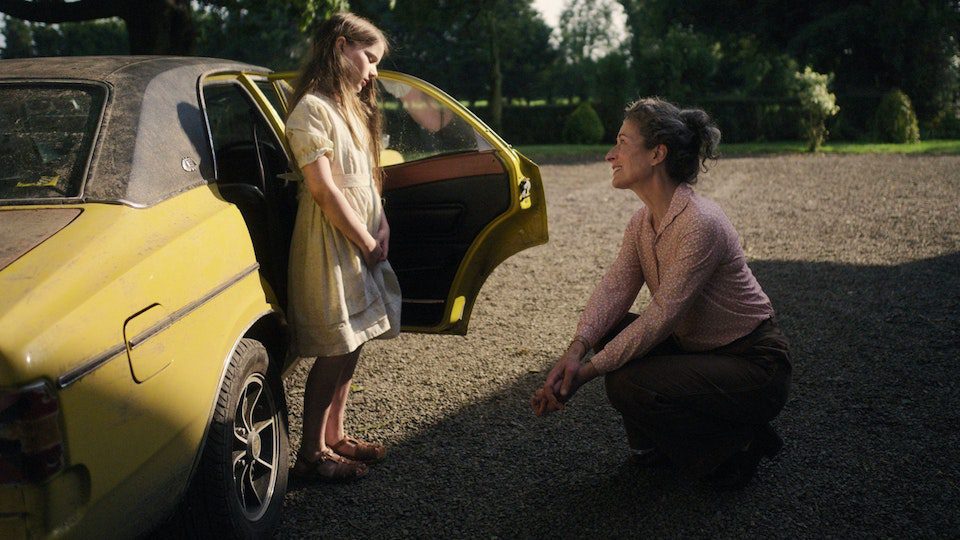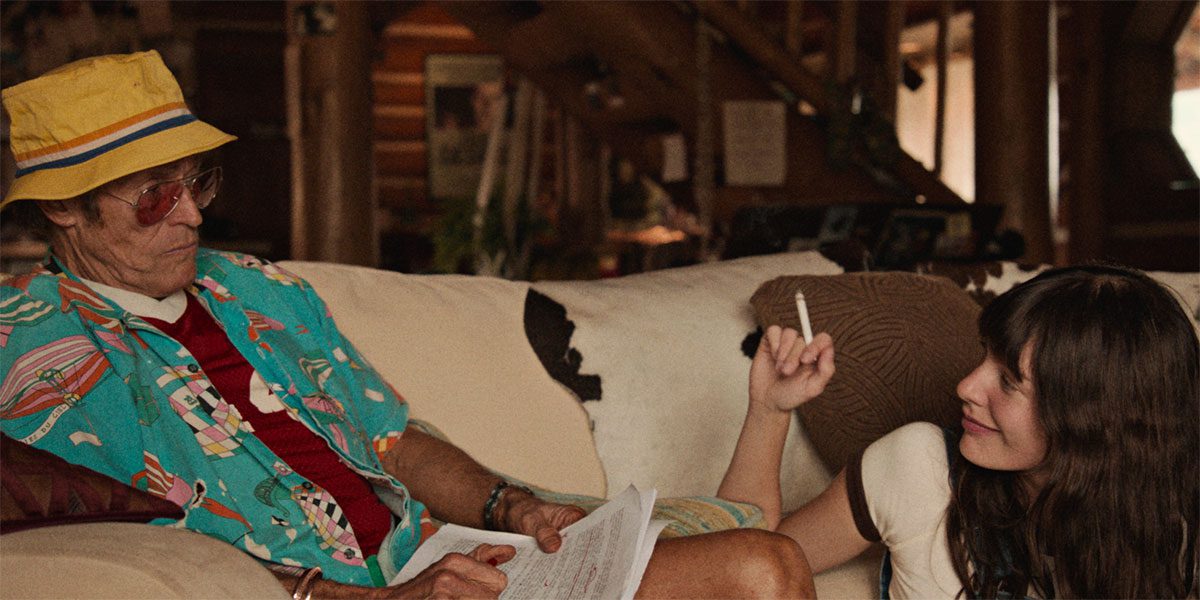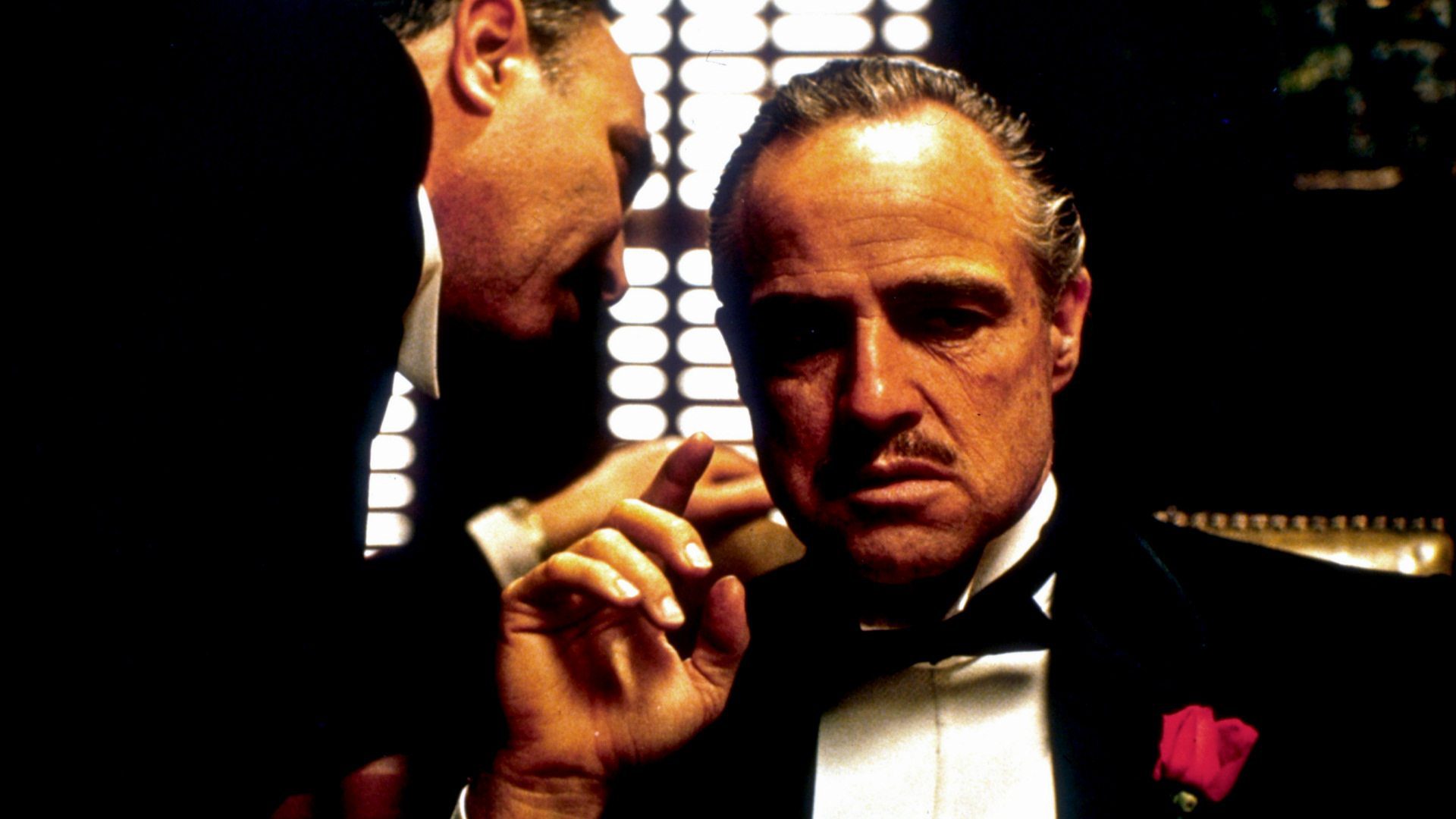
One of the nominees for Best International Feature at this years Oscars, The Quiet Girl is one of the most wholesome yet devastating films of the year. Directed by Irish Director Colm Bairead, this film transitions between use of Gaelic and English, a decision influenced by Bairead?s fierce defense of the Irish language. Adapted from Foster, a 2010 novella written in English by Irish Author Chlaire Keegan, The Quiet Girl marks his debut into feature filmmaking. The film debuted at Berlinale, going on to win the Crystal Bear and receiving a special mention from the children?s jury.
The Quiet Girl follows nine-year-old Cait (Catherine Clinch), the titular quiet girl. She is one of many siblings living with her impoverished parents who, in a family of many with a young infant and another one on the way, means that only the bold thrive… and Cait is not one of them. With Cait?s mom about to give birth, the couple decides to send Cait to live with her middle-aged cousin, Eibhlin (Carrie Crowley) and her husband, Sean (Andrew Bennett). As an older couple without kids, Cait is instantly welcomed into their home. Upon dropping her off, her father left with her suitcase leaving her without clothes. The abandoned state that Cait is left in only increases Eibhlin?s affection for her. Soon, Sean, who at first was cold to Cait?s arrival, starts to find ways to bond and have her open up to the couple.
For Bairead his breakout wasn?t really about being recognized on the international scene like he has, but rather to keep the Irish language alive in Irish film. The novella provided that opportunity because Gaelic is a language mainly kept to rural settings and the farms described in the novella worked well with that. Along with that he thought the point of view of this young girl was a beautifully empathetic lens in which to tell this story of the power of love, a common theme in film but he saw the potential for exploring new ideas around it through the story. The last scene of the film exemplifies that beautifully ending on a hopeful moment that stays true to the novel and lands quite effectively with its audience. Its religious elements are also subtly hinted towards like a lot of the films storytelling through the setting and the emotions of the characters. Its becomes clear that Sean and Eibhlin have a connection to Catholicism but the film slowly shows why their disconnected from it more than your average Irish person. Still Bairead wanted to make sure that was included as part of the setting as the church was prominent especially in the 1980s rural Ireland where these characters live. This layer of authenticity and Bairead?s expert understanding of filmmaking make the whole film an effective, yet understated piece which just might bring a tear to your eye.
Technically flawless throughout, The Quiet Girl is clearly created by an expert crew and led by a talented visionary in Bairead. The performances are all excellen,t with child actor Catherine Clinch doing a wonderful job as the lead, displaying the shyness of her character while still clearly being a presence in her dialogue scenes. The couple played by Carrie Crowly and Andrew Bennett are both quite charming and play their character with the proper joy that still brings out the underlying melancholy laying over the story. Bennett is able to make a natural transition from his character coldness to Cait to her becoming his love and joy, a feeling that appear so aptly by the end.
The technical standouts come from the cinematography and editing, which communicate a lot about the characters that they simply can’t express due to their desire to maintain proper etiquette. The 4×3 ration helps the film exemplify Cait?s perspective on the world and help us feel a sense of intimacy with her as she goes through some life-changing events. The colors of the film also help invoke a sense of beauty for Sean and Eibhlin?s farm in contrast to the colder paler setting of Cait?s home and school. Her home life lacks the cheerful presence of sunlight that bathes Cait?s world with Sean and Eibhlin. It all looks great. The music also fits the setting with its peaceful use of a gentle glockenspiel melody and lush piano harmonies.
My one critique of the story overall is that the lack of an active protagonist makes this film harder to invest in. It?s a patient film to be sure, not laying all the emotional impact that its going for until the final shots but that?s also what makes it effective. Cait doesn?t really change or go through struggles that she overcomes throughout the film rather she as the protagonist is changed by the love of the people and community around her.
But frankly, that?s the heart of the movie and the source material from which Bairead adapted and he certainly executed it well. Its refreshing to see a film show the power of care even with the surroundings of harsh, bleak (and sometimes) hopeless circumstances. The love and bond that Cait develops with her new parents is touching and really reminds you of every friend or family member that you never thought you?d be close to but they end up becoming one of the most important parts of your life. Of course, like most relationships they start to fall apart and the film confronts that grief with unabashed empathy. It confronts the power of secrets and the healing that vulnerability can bring in a way that invokes the nuance of Secrets & Lies, while having the beauty and innocence of films like The Tree of Life and My Neighbor Totoro. The fact that The Quiet Girl cements these ideas well enough to make me name these films is a testament to its power and, at a breezy 90 minutes, this is an essential piece to watch.
The Quiet Girl is in theatres on Friday, March 3rd, 2023.




